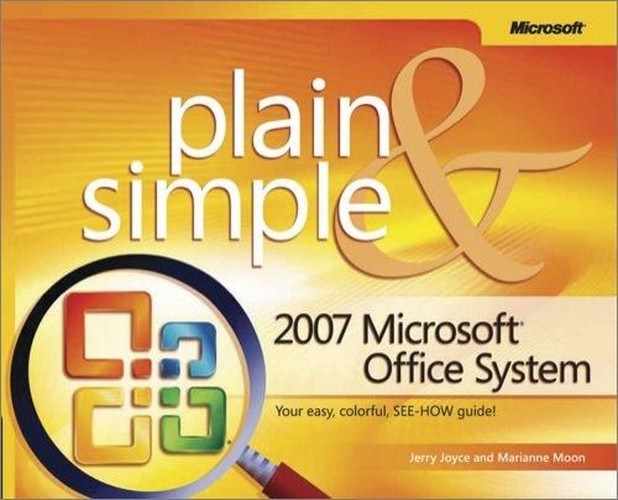In this section:
Microsoft Office Outlook 2007 is designed to help you manage your e-mail correspondence and more. This chapter shows you the basics of using Outlook for e-mail, such as how to add an e-mail account and compose and send e-mail messages.
Outlook lets you create e-mail messages containing much more than plain text. You can format the text in your e-mail using styles and even add your own pictures to your messages. A variety of graphical objects such as shapes, charts, and SmartArt are available to help you create attractive and effective e-mail. You can also include a file with your message or share your calendar as an e-mail message with just a few clicks.
You can use Outlook to quickly set up RSS (Really Simple Syndication) subscriptions and then read each RSS feed in its own Outlook folder. With Outlook, you can sort, search, and send RSS feeds to other people just like e-mail messages.
The Outlook new message form has many commands that help you create attractive and effective e-mail. The Message tab contains many frequently used commands such as text formatting, copy and paste, and spellcheck. Additional tabs contain groups of commands that enable you to include graphics and other objects; control options such as message format, delivery receipts, and other tracking options; and apply themes and advanced text formatting. Even though the Ribbon is new and offers a wide range of commands, the basics of composing a message in Outlook are much the same as in earlier versions.
Create, print, export, and manage Outlook items with the Office Button.
Save a message, undo and redo actions, and page through the messages in a folder with the Quick Access Toolbar.
Use commands on the Ribbon to work with the currently selected text or object.
Choose a tab to display different groups of commands.
Compose your e-mail in the body of the message form.
Choose recipients for your message.
Click the Send button to mail your message.
Enter a subject in the Subject field.
You can add much more than text to your e-mail messages using Outlook. This message uses commands from several tabs to achieve the effects that you see. The Insert tab has commands that enable you to add many types of objects to your e-mail messages.
Try This!
Insert a picture in an e-mail message. Open a new e-mail message and place your cursor in the body of the message. Click the Insert tab and then click Picture. In the Insert Picture dialog box, locate a picture (you can open the Sample Pictures folder and use one of those images) and then click Insert. The picture will be displayed in your message, and you can use the commands on the Picture Tools to format it.
Tip
You can send a copy of an e-mail message to people without displaying their e-mail addresses, or any other indication that they received a copy, by sending a blind carbon copy (Bcc). You can add the Bcc field to your e-mail messages by clicking on the Options tab and then, in the Fields group, clicking Bcc. Although you set this in an individual message, this setting will then be used by all new messages you create.


